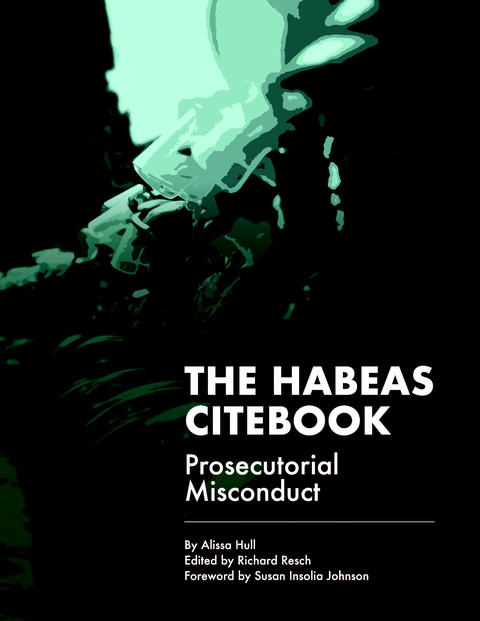How the Courts Are Using Compassionate Release to Fix Unfair Sentences
Compassionate Release:
It’s not up to the BOP Anymore
Previously, only the BOP could file a compassionate release motion, and you had to be on your death bed. Literally. Even then, you had a better chance of being struck by lightning and attacked by a shark on the same day. I don’t know what the statistics are for such a confluence of events, but I think it’s probably close to what your odds were for getting compassionate release under the old law.
People were actually dying while the BOP denied compassionate release requests and dragged its feet on others. Fortunately, Congress took notice. Under the First Step Act, Congress pushed the BOP out of the way to allow prisoners to file their own motions, if the BOP refused or ignored their requests. It’s the first substantive change to the compassionate release statute in decades, and it’s been a game-changer.
Under 18 U.S.C. § 3582(c)(1)(A), the so-called “compassionate release” statute, the director of the BOP served as the gatekeeper for compassionate release motions: A court could not reduce a prisoner’s sentence to allow for compassionate release, except “upon motion of the Director of the [BOP].” The First Step Act eliminated this exclusive power of the BOP by adding the words “or upon motion of the defendant” after that. As one court put it, “Defendants no longer need the blessing of the BOP to bring such motions.”
The court also clarified that once a prisoner files a compassionate release motion in the sentencing court, the BOP “may never weigh in or provide guidance” on whether that motion should be granted or denied. United States v. Haynes, 2020 U.S. Dist. LEXIS 71021 (E.D.N.Y. 2020).
Several courts have recognized that the amended § 3582(c)(1)(A) “vests courts with independent discretion” to grant compassionate release. United States v. Hope, 2020 U.S. Dist. LEXIS 86395 (S.D. Fla. 2020). In fact, “the district court assumes the same discretion as the BOP Director when it considers a compassionate release motion.” United States v. Brown, 411 F.Supp.3d 446 (S.D. Iowa 2019).
And why did Congress take the sole power from the BOP and give some to prisoners? Because the BOP blatantly refused to use its power to file compassionate release motions. In 2013, the Office of the Inspector General (“OIG”), responsible for investigating bad behavior by government agencies, filed a report showing that over a six-year period the BOP filed exactly zero compassionate release motions for non-medical reasons and just 24 for medical reasons. That’s out of 220,000 prisoners in its custody during that time. When the OIG told the BOP to step it up, it only approved 83 compassionate release requests the next year. United States v. Ebbers, 432 F. Supp. 3d 421 (S.D.N.Y. 2020) (explaining the findings of the OIG report).
Extraordinary and Compelling Reasons: Not Just for
Illnesses Anymore
While § 3582(c)(1)(A) says courts can reduce a sentence for “extraordinary and compelling reasons,” it doesn’t say what that means. Instead, it points to U.S.S.G. § 1B1.13 under the sentencing guidelines to define what criteria for compassionate release meet that definition. The problem is that § 1B1.13 was last updated before the First Step Act, and it still says that only the BOP can file a motion, which mainly focuses on medical reasons – just like the BOP’s policy says.
This contradiction has divided the courts on whether § 1B1.13 is still relevant for defining “extraordinary and compelling” under § 3582(c)(1)(A). United States v. Fox, 2019 U.S. Dist. LEXIS 115388 (D. Me. 2019) (collecting cases on the split among the courts). For example, in United States v. Cantu, 423 F.Supp.3d 345 (S.D. Tex. 2019), the court found that § 1B1.13 “clearly contradicts” the new § 3582(c)(1)(A) amendments under the First Step Act and that because Congress changed the statute to expand the use of compassionate release the guideline “no longer fits with the statute and thus does not comply with the congressional mandate.” See alsoHaynes, supra (noting “at least twelve other federal district courts” have held § 1B1.13 inapplicable under amended § 3582(c)(1)(A)).
In addition, Haynes pointed out that “the district courts have always had the discretion to determine what counts as compelling and extraordinary” for compassionate release. The courts have never been a “rubber stamp” for the BOP on compassionate release, the court said. Indeed, the First Step Act’s “key change” was “the removal of the [BOP] Director’s role as a gatekeeper.”
In United States v. Millan, 2020 U.S. Dist. LEXIS 59955 (S.D.N.Y. 2020), Judge Loretta A. Preska cited a host of reasons that were “extraordinary and compelling” to grant compassionate release. This included that Millan was “unconditionally rehabilitated” after taking dozens of BOP programs, was remorseful, was a “model inmate,” was a “leader of the religious community” in prison, and worked with at-risk youth. Do you see any medical reasons in there? There weren’t any cited by the judge, yet she granted Millan compassionate release to fix an unfair sentence.
One thing that still stands, however, is that the court must assess the factors under 18 U.S.C. § 3553(a) when reducing a sentence, even for compassionate release. These include (1) the seriousness of the offense, (2) a person’s personal history and characteristics, (3) the need for the sentence to reflect the seriousness of the offense, (4) the need to promote deterrence, (5) the need to protect the public from further crimes by the person [this is the big one the government pounds on], (6) the need to provide rehabilitation to the person, (7) the applicable guidelines range, and (8) the need to avoid unwarranted sentencing disparities among defendants with similar crimes and records. In addition, the sentence imposed must not be greater than necessary to achieve the purposes of sentencing.
The court also has broad discretion on whether to grant compassionate release. United States v. Chambliss, 948 F.3d 691 (5th Cir. 2020) (establishing the standard for when a court abuses its discretion in granting or denying compassionate release). This means that all of your prison conduct — both good and bad — comes into play.
What the Courts Are Doing
With Non-Medical
Compassionate Release
Somewhat surprisingly, the courts have used compassionate release to fix unfair sentences and for other relief where no avenue previously existed. Mandatory life sentences for drug offenders and stacked § 924(c) sentences have been overturned under compassionate release, where the courts didn’t have the authority earlier to do so any other way.
Mandatory “Life” Drug Sentences
Under the old “war on drugs” era, Congress gave the government full authority to require a court to sentence repeat drug offenders to life in prison without parole, even if their prior convictions were for mere possession. And the court had no say whatsoever — if the government chose to request such a sentence. While this was harshly criticized by judges across the board, prosecutors successfully convinced Congress that it needed these unfair mandatory sentences to threaten drug offenders into pleading guilty and cooperating with the government. Congress, until now, let the government have its way.
The First Step Act, however, changed some of this by reducing the sentence for those with two prior convictions from life to a minimum of 25 years and by changing the definition of a qualifying prior conviction to match the Armed Career Criminal Act’s “serious drug offense” requirement — which excludes mere possession priors. 21 U.S.C. § 851; 18 U.S.C. § 924(e)(2)(A)(ii). The mandatory minimum sentence for those offenses with only one drug prior was also substantively changed.
With compassionate release, the courts have found the authority to go back and change those § 851 sentences it didn’t want to impose in the first place but had no choice. In Hope, discussed above, Judge Kathleen M. Williams used compassionate release to reduce a life § 851 sentence imposed 30 years ago to “time served.” She cited numerous cases where courts have used compassionate release to reduce sentences under unfair sentencing laws, and she observed that if Hope were to be sentenced today he would’ve faced less time than he’s already served. Judge Williams rejected the government’s argument that Hope didn’t have any health issues, that his federal drug offense didn’t involve crack cocaine (which was the only drug offense change the First Step Act made retroactive), and that the First Step Act’s changes to § 851 weren’t made retroactive by Congress.
“District courts around the country have recognized that defendants are entitled to relief under the First Step Act for ‘extraordinary and compelling reasons’ including the sentencing disparities occasioned by promulgation of the Act,” she said. “Other courts have found that sentencing disparities like that presented in Mr. Hope’s case, coupled with a demonstration of profound rehabilitation, constitutes ‘extraordinary and compelling’ circumstances sufficient to warrant a sentence reduction.”
Judge Williams is not alone in using compassionate release to reduce old draconian § 851 life sentences. See, e.g., United States v. Mondaca, 2020 U.S. Dist. LEXIS 37483 (S.D. Cal. 2020) (Judge Dana Sabraw granting relief).
Stacked § 924(c) Sentences
Getting quite a lot of attention under non-medical compassionate release have been “stacked” § 924(c) sentences, where the government would pile on § 924(c) charges that would mandate what amounted to a life sentence in order to coerce someone into pleading guilty.
Before the First Step Act, any subsequent conviction under § 924(c) after a first conviction required a 25-year mandatory consecutive sentence for each conviction. So, in the event the government threatened to file more § 924(c) charges on top of the current charges if someone rejected its plea offer, it was legally allowed to do so.
Judges have complained about this practice for years, calling it unfair because it tied their hands and required unreasonably long sentences for arguably unconstitutional (and at least unethical) practices by the government. Under the First Step Act, Congress changed § 924(c) to require that such a conviction must be “final” before a subsequent conviction can require a consecutive sentence. This essentially eliminated the government’s ability to stack § 924(c) sentences. First Step Act, § 403(a).
In Haynes, discussed above, the court called the government out on how it penalized Haynes for rejecting a plea offer and going to trial. Haynes was charged with several bank robberies in the early 1990s and charged with just one “use of a firearm” count under § 924(c). The government made an offer of around eight years if he pleaded guilty, which included just three years for a single bank robbery charge and five years consecutive for the § 924(c) charge. The government threatened in its offer: “If the defendant fails to [take the offer], the government will seek to obtain a superseding indictment charging the appropriate additional counts under 18 U.S.C. § 924(c).” The government made good on its threat when Haynes went to trial.
The First Step Act took this power away from the government but didn’t make the changes retroactive. Still, Judge Dearie granted Haynes’ compassionate release motion. First, he cited that Haynes’ codefendant, who took a deal and then got out and robbed another bank, would complete his second sentence long before Haynes even completed his first. He also cited that Haynes’ stacked § 924(c) sentence was longer than the average sentence for murder, child pornography, extortion, and terrorist-related offenses — all combined.
The court also noted that Congress said its intention under the First Step Act was “clarification of § 924(c),” which was a “clear message” that Congress never intended that the brutal sentence [Haynes] is serving be imposed.” Nonretroactivity of the § 924(c) changes, the court said, “simply establishes that a defendant sentenced before the [First Step Act] is not automatically entitled to resentencing.” It wouldn’t be unreasonable for Congress to expect that a court could grant relief for stacked § 924(c) sentences “on a case-by-case basis,” the court concluded.
As for the “extraordinary and compelling reasons,” the court said the First Step Act’s “elimination of the § 924(c) sentencing weaponry that prosecutors employed to require [Haynes’] sentence” was enough, collecting cases where courts have granted compassionate release for stacked § 924(c) sentences.
In another non-medical compassionate release case, the court in Millan, discussed above, granted relief to undo an unfair life sentence under the “continuing criminal enterprise” statute. Clearly, compassionate release isn’t just for medical reasons anymore.
And compassionate release isn’t just for “release,” either. The statute, § 3582(c)(1)(A), actually says a court “may reduce the term of imprisonment” if it wants to; “release” isn’t required. In Carter v. United States, 2020 U.S. Dist. LEXIS 68343 (D. Md. 2020), Judge Ellen L. Hollander reduced a life sentence to a term of years, over the government’s objections, by granting compassionate release.
Getting Started:
Administrative Remedies
While the BOP may be out of the picture for non-medical compassionate release, § 3582(c)(1)(A)still requires that a written request be filed with the BOP for compassionate release before a prisoner can file his own motion in court. The courts are divided over whether you have to exhaust all your administrative remedies before going to court (i.e., the BP-8, BP-9, etc.). Most say you can if you still want to, but you don’t have to and can just wait 30 days to file your motion.
This aligns with the statute, which says that a prisoner can file a motion “after the defendant has fully exhausted all administrative rights to appeal a failure of the [BOP] to bring a motion on the defendant’s behalf or the lapse of 30 days from the receipt of such a request by the warden.” [emphasis supplied]
The government, though, has been winning some arguments in the courts that a prisoner must go through the whole administrative remedy process before filing in court, which can take up to six months. United States v. Arthaloney, 2020 U.S. Dist. LEXIS 89245 (D. Neb. 2020) (“if the warden denied the request within 30 days of receipt, the defendant must exhaust administrative remedies”).
This, however, ignores that there are two separate options for giving the BOP the first chance: (1) exhausting administrative remedies or (2) waiting 30 days. In Millan, the court found that the statutory requirement was satisfied after a 30-day wait from receipt of Millan’s written request to the warden. And it’s the date of the receipt that counts, not when it’s submitted. United States v. Miller, 2020 U.S. Dist. LEXIS 80817 (D. Idaho 2020). It doesn’t have to be a formal request, like a BP-9, and a “copout” suffices as a written request.
But properly exhausting your administrative remedies has its benefits. The First Step Act added a provision, § 3582(d), that the BOP must file an annual report on all compassionate release requests it receives and the outcome of those cases, even if the prisoner filed his own motion. However, the BOP only has to include the data from motions filed in cases where administrative remedies were exhausted. So, still file those BP-9s, BP-10s, and BP-11s, even if you go to court only after waiting 30 days.
To date, no Court of Appeals has addressed whether an emergency can excuse the initial request to the BOP, such as a deadly virus like COVID-19. All the district courts so far have held that it’s statutorily mandated and can’t be waived. But you can file again once you do meet the requirements. And for non-medical compassionate release, administrative remedies may be a waste of time. This is because the BOP’s Program Statement 5050.50 on compassionate release, amended after the First Step Act, still only allows the BOP to move for compassionate release for medical reasons. Could exhaustion be “futile” in these cases? Again, there’s not much in the courts about this yet.
Conclusion
As a digital subscriber to Criminal Legal News, you can access full text and downloads for this and other premium content.
Already a subscriber? Login





